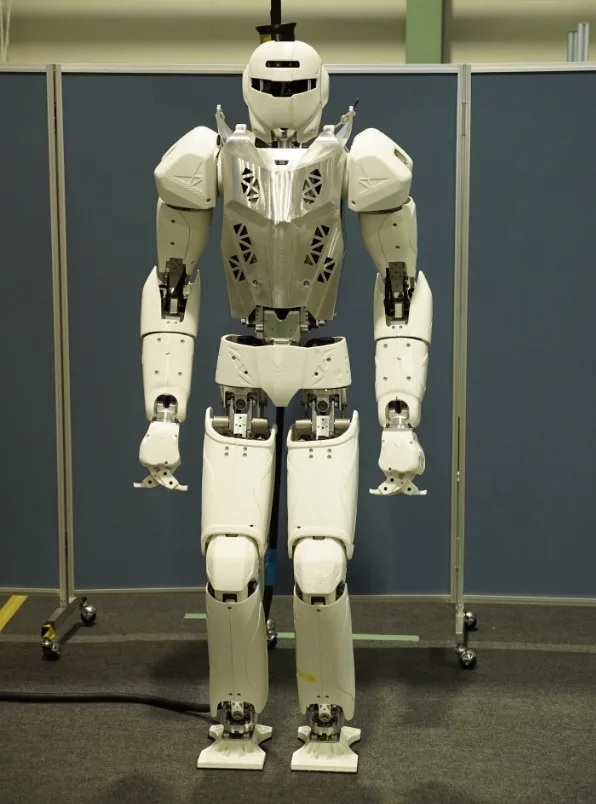
Kaleido (Kawasaki Robotics)
| Feature | Details |
|---|---|
| Robot Name | Kaleido |
| Company | Kawasaki Robotics | Japan |
| Height | 178 cm (5 ft 10 in) |
| Weight | 85 kg (187 lbs) |
| Walking Speed | Human-like natural gait |
| Battery Life | Not disclosed |
| Key Capabilities | 32 DoF, 50-60 kg lifting capacity, spherical head display, force sensors |
| Primary Applications | Disaster response, elderly care, industrial collaboration, teleoperation |
| Availability | Research platform (8th generation as of 2025) |
| Notable Features | Projector-based facial expressions, force sensors in elbows and ankles, human-robot teamwork |
Note: Details may not be current or accurate.
About Kaleido
Kawasaki Kaleido represents a groundbreaking achievement in humanoid robotics, combining over 50 years of industrial robot expertise with cutting-edge human-machine collaboration technology. Standing 178-180 cm tall and weighing 83-85 kg, Kaleido mirrors the physical dimensions of an adult human while delivering exceptional strength capable of bench pressing 50-60 kg, with its 32 degrees of freedom enabling fluid, human-like movements that can transition seamlessly between bent-knee industrial walking and straight-leg human-style locomotion. What sets Kaleido apart is its revolutionary 8.0 generation featuring advanced force sensors embedded throughout its body, including innovative elbow sensors that detect forces and moments beyond just wrist interactions, while its most striking feature is a spherical monitor head that displays facial expressions, videos, and text, transforming it from a mechanical tool into an interactive partner capable of conveying emotions and building trust with human collaborators. Its sophisticated balance control system with real-time foot position correction ensures stability in dynamic environments, while integrated teleoperation capabilities allow remote control in hazardous situations without risking human lives. Looking toward the future, Kawasaki envisions Kaleido serving in disaster response scenarios, elderly care facilities, and collaborative manufacturing environments where its robust construction can withstand falls while its intuitive interaction capabilities make it safe for close human cooperation, with the robot's hybrid operational model combining autonomous routine task execution with human oversight for complex decisions, positioning it as a bridge between current automation and fully autonomous AI systems. While currently priced above $150,000 with no confirmed commercial timeline, Kaleido represents Japan's philosophical approach to robotics - creating machines that complement rather than replace humans, preserving dignity while enhancing capabilities in our increasingly automated world.